White Doberman: features of color and content
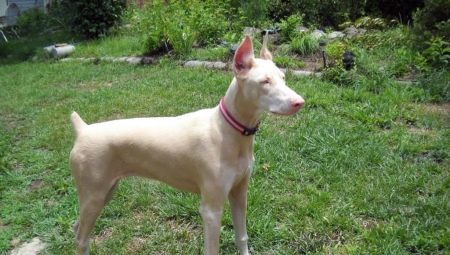
Pets have become constant human companions. The most common living pets are dogs, cats, parrots, fish and even reptiles. Kind, affectionate, playful and restless pets bring their owners a huge amount of joy, positive emotions and positivity, and also save their owners from boredom and loneliness. Often, owners do not want to see standard breeds of animals in their home and prefer unusual species that can surprise not only family members, but also invited guests.
One of these unusual types of dogs is the white Doberman, which has not only an unusual appearance, but also non-standard character traits.
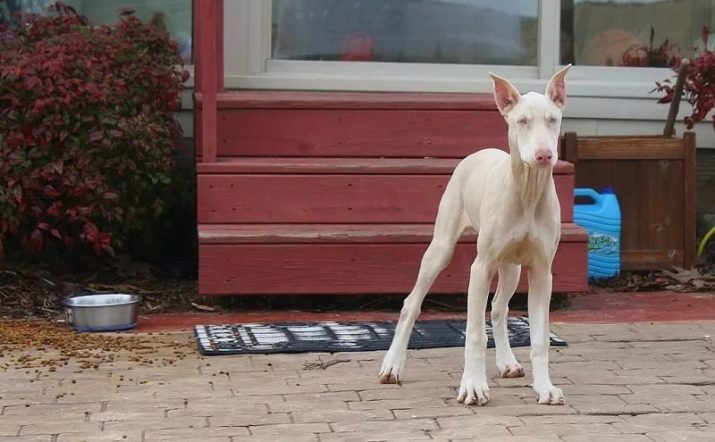
Description
White Doberman Pinscher refers to partial or incomplete albinos with blue eyes. Breeding work on the breeding of this species began in the middle of the 19th century, the purpose of which was to obtain hardy, intelligent and disciplined dogs for work in the police. The first puppies were received only two decades later from parents of a standard color.Closely related crossing did not bring a fixed result, but led only to a partial one.
The appearance of such an unusual color is due to the fact that the gene responsible for the white color of the animal's coat is not located together with the diluting and color genes, but in a different place in the chromosome. And the two above-mentioned DNA regions are just responsible for the formation of one of the main four colors of Dobermans.
This breed is not an officially recognized species, and born puppies are discarded due to the presence of genetic defects, mutilation and very poor health. Dog handlers pay special attention to the fear and intolerance of light.

The White Doberman is a strong and elegant animal with a well-developed muscular system and a protruding chest. The skull has a triangular elongated shape, with small oval eyeballs located on it. Protruding ears can be cropped or whole. The jaw has a scissor bite and strong white teeth.
The long and strong neck merges smoothly into a small back. In all newborn puppies, breeders almost completely dock the tail immediately after birth. The muscular limbs are long and parallel. The average height of an adult is 75 cm, and the weight is 50 kg.
The average lifespan of a white Doberman is 7 years. but, having created comfortable living conditions, choosing the right menu and balancing physical activity, the animal will be able to delight its owners for more than 10 years.
The white coat consists of short, coarse hairs with no undercoat. The peculiarities of albinos are the presence of blue eyes and a light colored nose. These individuals are not used for breeding, and also do not participate in exhibitions and competitions.
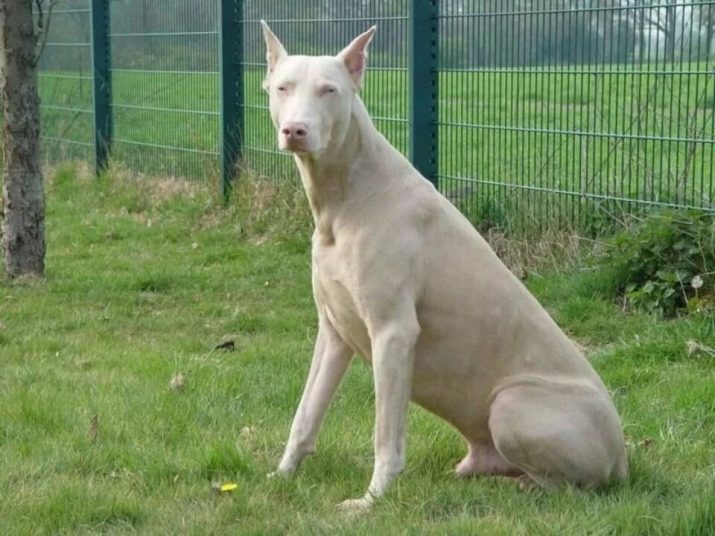
Distinctive character traits:
- indecision;
- lack of a quick response;
- cowardice;
- inadequacy;
- nervousness;
- a developed sense of possessiveness;
- devotion.
These character traits must be taken into account during the training and training of animals. The Doberman must constantly feel the attention of his master and understand his superiority. The animal will only obey commands from a strong and persistent owner. All requirements must be stated firmly and confidently, but without aggression, cruelty, beatings and rudeness. After a correctly completed task, it is advisable to reward your pet with a delicious treat.
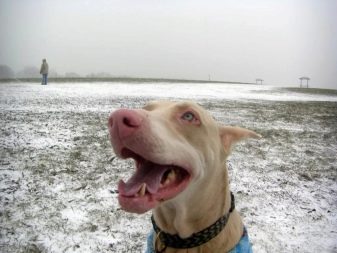
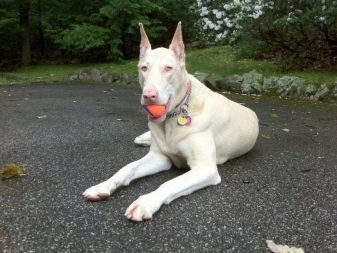
The genetic trait of white Dobermans has made them vulnerable to the following diseases:
- fear of light;
- chronic eye and hearing diseases;
- oncology and various types of tumors;
- endocrine system diseases;
- lipoma;
- diseases of the digestive system;
- hepatitis;
- allergy;
- hair loss;
- von Willebrand disease;
- diseases of the circulatory system;
- diseases of the musculoskeletal system and joints;
- skin rashes and irritations.
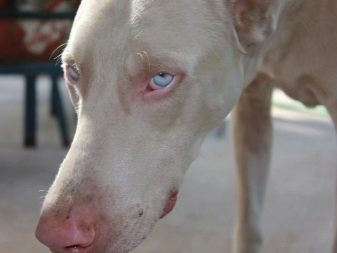
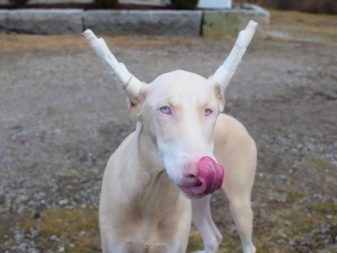
Like any pet, the white Doberman has a number of advantages and disadvantages.
Advantages:
- beautiful appearance;
- devotion.
Disadvantages:
- high susceptibility to various diseases;
- weak nervous system;
- poor command acceptance.


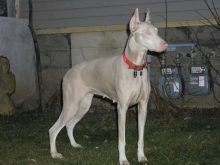
Maintenance and care
Albino Dobermans have weak immunity, high susceptibility to disease and need warm housing. In winter, it is strictly forbidden to keep animals in open enclosures. Prolonged exposure to the cold can provoke hypothermia of the body, and sometimes even death of the animal.
Due to the presence of short hair, dogs do not need to comb it out frequently. To maintain a beautiful aesthetic appearance, it is enough to brush with a brush with hard and coarse bristles every 7 days. As a hygiene procedure, it is necessary to apply wet rubdowns once a week... As necessary, it is necessary to carry out cleaning your ears, trimming your nails and rubbing your eyes. Once a year, the animal needs to arrange full bathing with special shampoos and gels.
To prevent the development of dangerous diseases, pets should be vaccinated in a timely manner and their skin should be treated from various parasites.
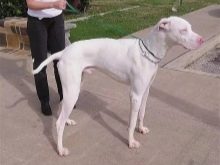
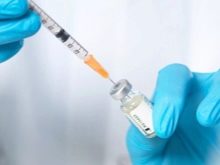

The animal needs daily walks along the learned and familiar route. An unexpected change in direction can provoke panic and aggression in your dog. For walking, you should choose shaded places away from roads and noise. Prolonged exposure to direct sunlight can cause sunburn. Being in the fresh air, it is necessary to give preference to calm walks, which do not involve overcoming obstacles and performing various training tricks. Every careless movement can provoke the appearance of injuries in a visually impaired animal.
In the winter pet wardrobe be sure to have warm clothes with a hood, which will prevent the pet from hypothermia and freezing of the ears. For walks in wet weather, you need to purchase special raincoats that will protect dogs from fur pollution and help avoid colds.

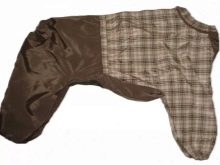

Feeding
Gentle and sensitive animals are more prone to allergic reactions and need a complete and properly selected diet. All feeds used must be of only high quality and free from dyes and preservatives. The winter diet should have a higher calorie content than the summer one, due to the need to heat the body. An adult animal should be fed no more than 2 times a day.
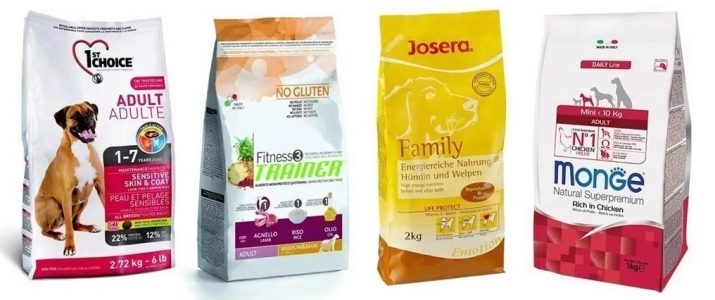
List of natural products:
- beef;
- poultry and offal;
- mutton;
- sea fish;
- cottage cheese;
- kefir;
- boiled eggs and omelet;
- porridge in meat broth (rice, buckwheat, rolled oats, millet, bran);
- greens (lettuce, parsley);
- boiled and fresh vegetables (cabbage, carrots, cucumbers, tomatoes, beets, zucchini, pumpkin).
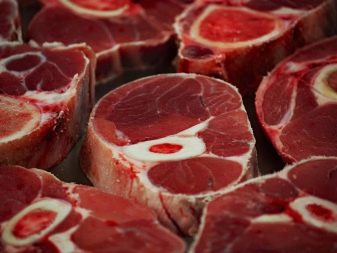

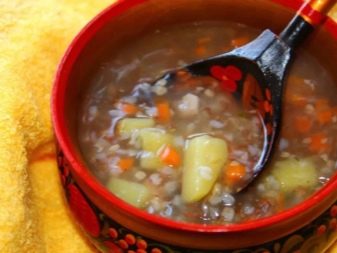
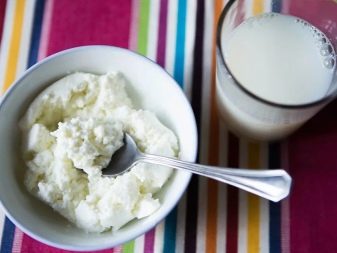
Dobermans have a positive attitude towards vegetable salads with vegetable oil or sour cream. The dog's daily menu should contain at least 1000 grams of fresh meat. For animals during the period of gestation, this rate must be doubled.
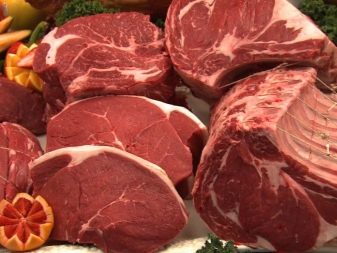

Cynologists categorically prohibit feeding the dog from a common table, as well as adding fried, salted, smoked and pickled foods to his diet, which can provoke diseases of the digestive system and poisoning. The following foods should not be on the dog's menu:
- fat meat;
- bones;
- semolina;
- pearl barley;
- corn porridge;
- sweet pastries and sweets;
- canned food;
- salt;
- seasonings;
- peas and beans;
- sausage, sausages;
- dumplings;
- vitamins for humans;
- potatoes;
- whole milk;
- semi-finished products.
Constant access to clean water is the key to strong immunity and well-being of the animal. The amount of food used should be calculated according to the age and weight of the dog.
After each meal, it is necessary to thoroughly wash the food containers with special detergents and do not leave windy and rotten food in the bowls.

Choosing puppies
Choosing the right puppies is the key to getting a strong and healthy animal. Experienced breeders recommend purchasing from professional breeders who can show the puppy's passport and immunization card. The conditions of keeping young animals, as well as their diet, are of no less importance. Even minimal deviations from the norms should alert buyers, and possibly completely exclude the purchase of a puppy from unscrupulous sellers... It is strictly forbidden to buy albinos in spontaneous and unauthorized markets.
Having made the final purchase decision, every effort should be made to create a comfortable living environment for an unusual dog.
Experts note the high price of white Dobermans and the difficulty of acquiring them. Many breeders consider this breed to be a marriage and do not register newborn puppies.Novice dog breeders should take into account the following feature of young dogs - the absence or lack of expression of genetic defects, which will become bright and noticeable with age.

Signs of a healthy young stock:
- dark eyeballs;
- Long neck;
- long and powerful body with a square shape.
Curved feet and light spots are unacceptable deviations from the standard. Professional dog handlers recommend paying attention to the following uncharacteristic features:
- small growth;
- too large the size of the limbs;
- the presence of long hair;
- the shape of the body, far from square;
- incomplete set of teeth;
- weak bone skeleton;
- ears that are not set correctly (high or low);
- curved or convex spine;
- the presence of clubfoot and lameness;
- the presence of a bevel in the croup zone.
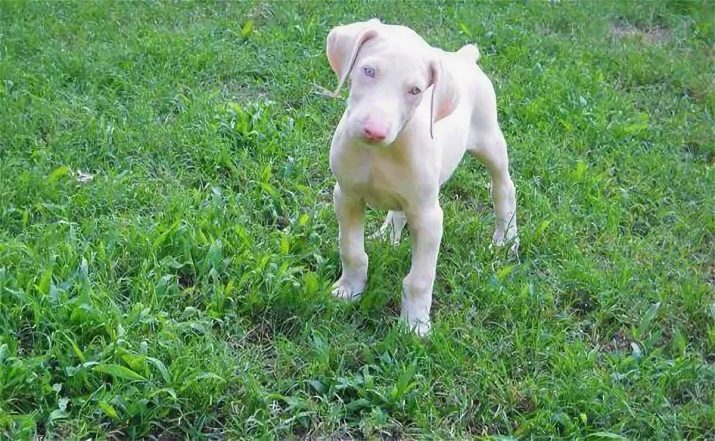
For puppies up to 45 days old, breeders should dock the tail and, if desired, the ears. Experts do not recommend carrying out these manipulations at an older age. The immunization card for three-month-old puppies should contain information about vaccinations against the following diseases:
- leptospirosis;
- plague;
- adenomovirosis;
- parvovirosis;
- viral gout;
- parvovirus infection.
Vaccinations must be carried out regularly every 12 months.

The decision to purchase an unusual animal should not be based on emotions, but on common sense. A gentle and sensitive pet needs special care, timely medical attention and constant behavior correction. Novice dog breeders should understand that they are fully responsible for the life and health of the pet. If you do not have complete confidence in your abilities and the ability to raise a healthy and obedient dog, then you must abandon this venture.
You can take a closer look at the white Doberman pinscher.


































